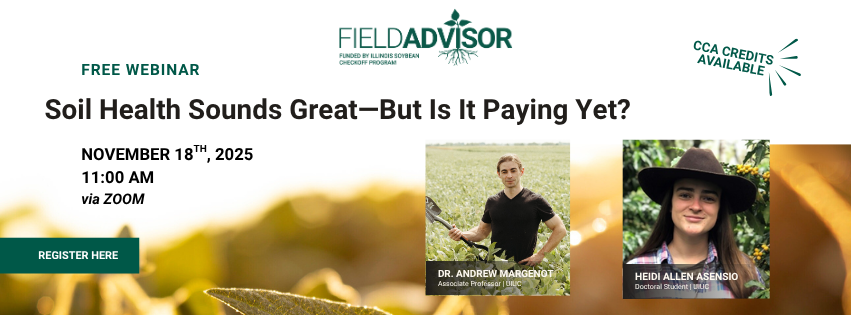Adopting cover crops and no-till can improve soil health over time, but what about the short-term returns? This webinar takes a look at two years of replicated trial results across Illinois to see how these conservation practices are performing.
Learn how no-till and cover cropping—used alone or together—stack up against chisel tillage with no cover crops when it comes to soybean yield and economics. Presenters will also share data from corn–soybean and corn–wheat/soybean rotations and discuss how soil health testing fits into the cost equation.
Presenters:
Andrew Margenot, Ph.D., is a soil scientist and associate professor at the University of Illinois Urbana-Champaign. He joined the Illinois agricultural community in 2017 and leads a research team of more than 40 members that evaluates nutrient biogeochemistry in Illinois and the greater North Central U.S. region. Margenot’s research focuses on phosphorus management, soil health and carbon crediting, with the goal of supporting efficient nutrient use for crop productivity that also supports environmental quality.
Heidi Allen Asensio is a doctoral student in the Department of Crop Sciences at the University of Illinois Urbana-Champaign. She joined Margenot’s lab in 2021. Her research seeks to establish and integrate benchmarks of soybean sustainability in Illinois using soil health, water quality and climate-smart metrics. Allen Asensio is passionate about working collaboratively with farmers, understanding local agricultural practices and ultimately generating knowledge to inform decision-making.



 and then
and then